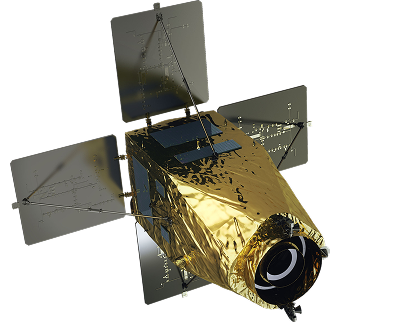



Launched in 2015, the Next-Generation Medium-Sized Satellite Development Project is the first new low Earth orbit (LEO) satellite development initiative in over 20 years, following the commencement of the Korea Multi-purpose Satellite (KOMPSAT) program in 1994. This program represents a paradigm shift from a government-led (research institute-centered) satellite development model to one led by domestic industry. The first phase of the project (Satellites 1 and 2) focused on establishing a 500 kg-class standard platform for medium-sized satellites and independently developing two satellites for high-resolution Earth observation. The second phase (Satellites 3, 4, and 5) leverages the platform technologies developed in the first phase. It aims to develop three medium-sized satellites for space technology verification, space science research, agricultural and forestry monitoring, and water resource management—led by domestic industrial partners. Compared to conventional large-scale satellites, these next-generation medium-sized satellites offer high performance with reduced costs and accelerated development timelines. They are expected to meet a wide range of public sector needs and foster a sustainable industrial ecosystem for satellite development within Korea’s private sector. KARI served as the lead developer for the first satellite in the series and has facilitated technology transfer to domestic companies. It also continues to participate in the follow-up satellite programs—supporting payloads, ground systems, and technical supervision—to meet growing public satellite demand and promote the expansion and advancement of Korea’s space industry.
| Development Phase | Lead Ministry | Primary User Agency | Main Mission of the Satellite | Prime Contractor | Key Participation Areas | |
|---|---|---|---|---|---|---|
| Phase 1 | Satellite 1 | Korea Aerospace Administration (KASA) | Ministry of Land, Infrastructure and Transport (MOLIT) | Land and Resource Management | Korea Aerospace Research Institute (KARI) | System / Bus / Payload / Ground Segment |
| Satellite 2 | Korea Aerospace Administration (KASA) | Ministry of Land, Infrastructure and Transport (MOLIT) | Land and Resource Management | Korea Aerospace Industries, Ltd. (KAI) | Payload | |
| Phase 2 | Satellite 3 | Korea Aerospace Administration (KASA) | Korea Aerospace Administration (KASA) | Space Technology Validation & Scientific Research | Korea Aerospace Industries, Ltd. (KAI) | Technical Management & Supervision |
| Satellite 4 | Korea Aerospace Administration (KASA) | Rural Development Administration & Korea Forest Service | Agricultural and Forest Monitoring | Korea Aerospace Industries, Ltd. (KAI) | Payload / Ground Segment / Technical Management & Supervision | |
| Satellite 5 | Korea Aerospace Administration (KASA) | Ministry of Environment | Water Resource Monitoring | Korea Aerospace Industries, Ltd. (KAI) | Payload / Ground Segment / Technical Management & Supervision | |
KARI led the development of KOMPSAT Next-Generation Medium Satellite-1 for high-resolution Earth observation, with specifications including a panchromatic resolution of approximately 0.5 meters, color resolution of 2 meters, and a swath width of about 12 kilometers. Through the development of Satellite-1, KARI secured core technology for a standardized satellite platform that is adaptable to various public sector payload needs while reducing development time and cost. These technologies, including system and bus development capabilities essential for comprehensive satellite system integration, were transferred to a domestic company selected as the lead R&D for Satellite-2. In addition, KARI promoted the development of an indigenous electro-optical payload with 0.5-meter-class resolution. As a result, most payload components and technologies, with the exception of the optical detector, were successfully localized, reducing the prior reliance on foreign suppliers. This localization of electro-optical payload technologies enabled the acquisition of advanced precision mechanical and electrical engineering capabilities. KOMPSAT Next-Generation Medium Satellite-1 was launched in 2021 and is currently operating successfully, supporting public sector needs related to land and resource management, disaster response, and the provision of high-resolution satellite imagery for national geospatial services.
| Category | Localized Components | Participating Organizations |
|---|---|---|
| Electro-Optical Payload | Reflector | Korea Research Institute of Standards and Science (KRISS) |
| Optical Structure | Deck Aviation | |
| Optoelectronics Unit | Hanwha Systems | |
| Image Data Processing Unit | Lumir | |
| X-band Transmitter | Genohco | |
| X-band Antenna | Geukdong | |
| Thermal Control Unit | Doowon |
The subsequent KOMPSAT-Next satellites (No. 2, 3, 4, and 5) are being developed under the leadership of domestic industries, which have inherited the core technologies developed by KARI for KOMPSAT-Next 1. KARI provides technical oversight and supervision for system and bus development carried out by industry and supports satellite development through its contributions to the payloads for KOMPSAT-Next 4 and 5, as well as ground station development.
KOMPSAT-Next 2 is identical in design to KOMPSAT-Next 1 and will work in tandem to provide high-resolution Earth observation imagery for public-sector applications, such as land and resource management and national geospatial information services. KOMPSAT-Next 3 is being developed for space technology demonstration and space science research. Its payloads are being developed by KAIST (Satrec), Hallym University, and the Korea Astronomy and Space Science Institute (KASI).
Notably, KOMPSAT-Next 3 is scheduled for launch aboard the Korean launch vehicle, NURI. KOMPSAT-Next 4 will be equipped with a wide-area electro-optical camera (with a swath width of approximately 120 km and 5 m resolution) to support agricultural monitoring and forest resource observations.
KOMPSAT-Next 5 will be equipped with a C-band Synthetic Aperture Radar (SAR) payload (providing a 120 km swath and 10 m resolution) to support missions including water resource monitoring and river management.
The ground station will build upon the infrastructure established during the KOMPSAT-Next 1 mission and further develop systems such as antennas to enable integrated operations across the satellite series.